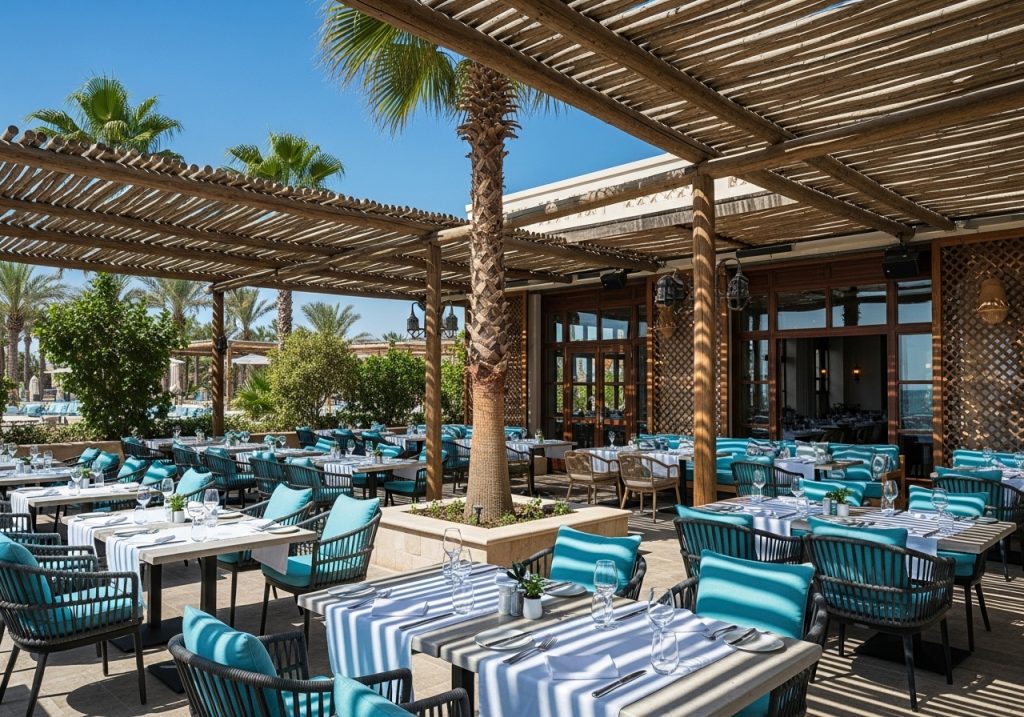Are you working on a project such as building a resort, hotel, or other high-end development? Have you ever considered making treated lumber products part of your building material list? If you haven’t, it would be worth your while to read this blog.
Treated lumber products offer many opportunities that can be to your advantage at best, in ways you wouldn’t expect. Especially, if your main focus is sustainable design, a root that more and more specialists are following.
In this blog, we will discuss everything you need to know about treated lumber products, specifically CCA and Tanalith E, what applications and environments they work well in, and why treated lumber products are ideal in the Middle East.
Wood Species Available In South Africa For Construction
It may help to know that, in South Africa, two common species used for construction are SA Pine and Eucalyptus Grandis. Although both species work well in construction, they have different functions. By understanding the basics, you can make smarter choices and ensure your treated lumber products last longer and perform exactly as you need them to.
Let’s dive into some details of each species:
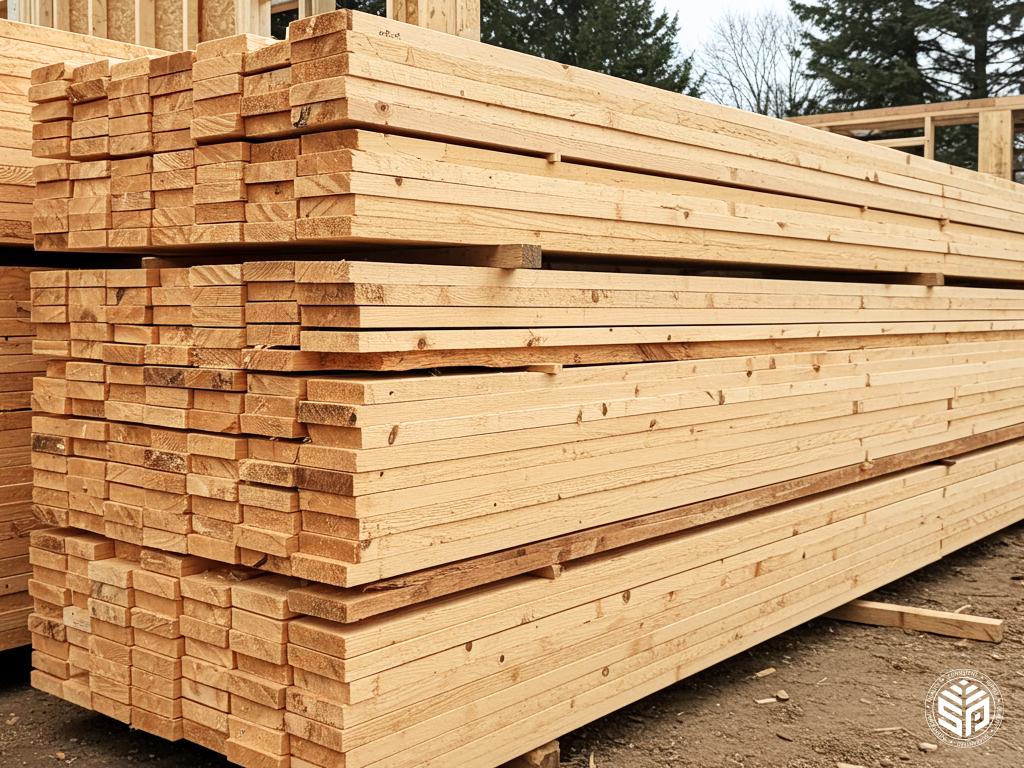
South African (SA) Pine For Construction
SA Pine falls under the softwood category, and it stands out for its rapid growth rate and sustainable cultivation. This species is highly favourable for structural use, such as lumber frames, trusses, deck frames, and more. For these purposes, the lumber is graded to ensure strength and stability. The lumber for structural use at Sabie Poles are graded according to national standards under S5 grade.
What Does “S5 Graded Construction Lumber” Mean?
The “S5” classification refers to a structural grade of lumber under the South African standards, indicating that the lumber has been stress-graded or certified to meet specific strength and load-bearing criteria. According to industry information, S5 lumber is described as “construction grade” and is produced in compliance with the specification SANS 1783 (SABS) for structural softwood lumber.
Furthermore, SA Pine performs exceptionally well in moulding applications such as decking, cladding, and ceiling boards, thanks to its smooth finish and easy workability.
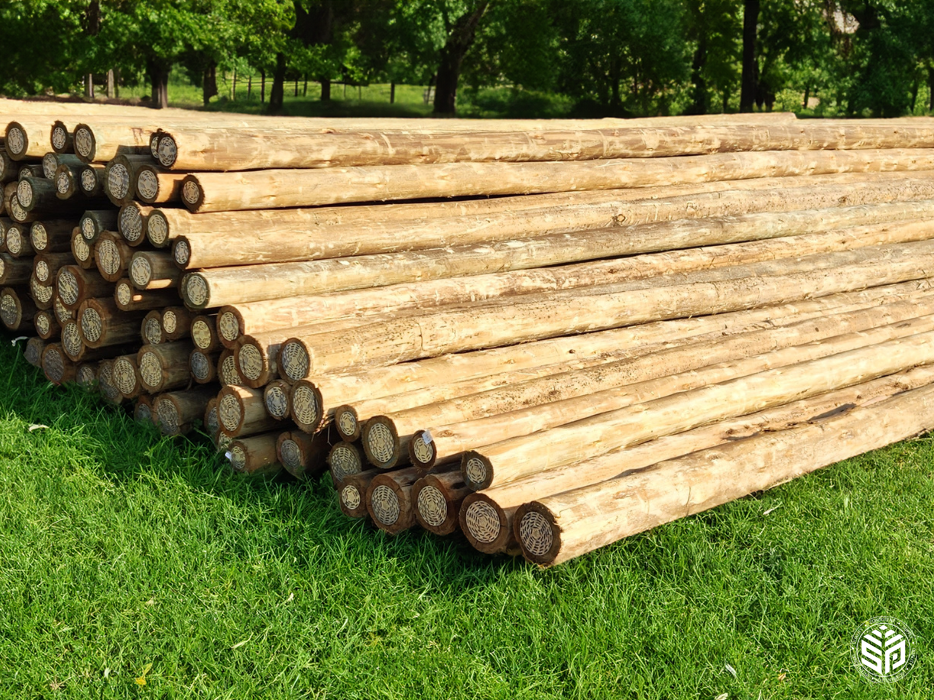
Eucalyptus Grandis (Saligna) For Construction
Eucalyptus falls under the hardwood category; they are naturally very strong. This species is widely used in its natural form for construction applications. Examples are support beams, foundation piles, roof frames (thatch), and more. For strength and stability purposes, these poles are also graded according to national standards, which fall under SABS.
Although both species are inherently strong, untreated lumber remains vulnerable to decay, insect attack, and harsh weather conditions. That’s why treatment, such as CCA or Tanalith E, is essential to enhance durability and extend the lumber lifespan, particularly for outdoor and structural applications.
Here’s a fun fact:
Left unprotected and exposed, lumber doesn’t stand a chance: it can start rotting, warping, or attracting insects in just a few short years. But when treated with CCA or Tanalith E, it transforms into a powerhouse of durability, staying strong and beautiful for decades. It’s the smart way to protect your investment and build with confidence.
How We Make Treated Lumber Products Last Decades
Pressure treatment remains the most reliable and permanent method of extending lumber’s lifespan. Through this process, preservatives are deeply and evenly absorbed into the wood, providing long-term protection against decay, insects, and harsh environmental conditions.
At Sabie Poles, we take great care to ensure every piece of lumber that enters our treatment plant meets strict standards before, during, and after the treatment process. Here’s a breakdown of the complete process:
Step 1: Preparing For Lumber Treatment
Every batch of lumber undergoes a detailed inspection and preparation phase before pressure treatment begins.
- Lumber Inspection and Counting: Each load is verified and counted by the designated loading supervisor.
- Correct Hazard Class and Retention Selection: The lumber is categorized according to its intended use, ensuring the correct retention level and hazard class are applied.
- Moisture and Sapwood Check: Lumber is marked to monitor moisture content and ensure sufficient sapwood penetration during treatment.
- Solution Concentration Test: A titration test is performed before every charge to confirm the concentration of the treatment solution.
- Equipment Safety Check: The system is inspected for leaks or equipment damage, and any issues are reported immediately before proceeding.
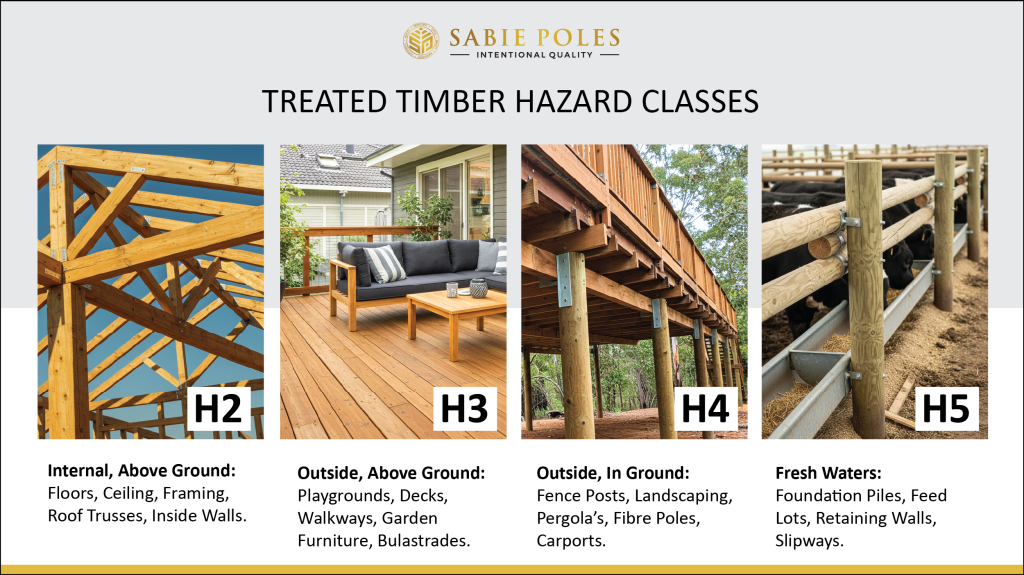
Step 2: Identifying The Correct Hazard Class
In South Africa, lumber is classified into different hazard classes based on where and how it’s used. The higher the hazard number, the greater the exposure to decay or insects, and the more preservative treatment the wood needs.
At Sabie Poles, we supply CCA-treated lumber products in the following hazard classes:
- H2 – Indoors, away from moisture and ground contact. E.g., Roof trusses, ceiling, flooring, doors, window frames, and laminated beams.
- H3 – Outdoors, above ground, and exposed to weather but not soil. E.g., Pergolas, fencing rails, decks, gates, cladding, garden furniture, and thatch roof poles.
- H4 – In-ground contact, exposed to moisture and decay. E.g., Fence poles, playground structures, rail bearers, and agricultural poles.
- H5 – Heavy moisture or water contact. E.g., Bridges, piling, livestock pens, walkways, and retaining walls.
- H6 – Saltwater and marine environments. E.g., Jetties, groynes, slipways, and marine piling.
At Sabie Poles, we primarily treat our poles to H4 and H5(upon special request) classifications, while droppers , laths and lumber products such as structural and mouldings are treated to H3.

Step 3: Pressure Treatment Begins
The pressure treatment involves penetrating the chemicals deep into the lumber using high pressure.
- The untreated lumber is loaded into a sealed treatment cylinder.
- The cylinder is partially filled with the preservative solution.
- A vacuum pump removes air from the lumber and cylinder, preparing the wood for absorption.
- The cylinder is filled with the CCA solution, and pressure is applied to force the preservative deep into the lumber.
- Once absorption is complete, the remaining solution is drained back into a holding tank.
- A final vacuum removes excess liquid, ensuring only the required preservative remains fixed in the lumber.
- The cylinder is opened, and the treated lumber is moved for inspection.
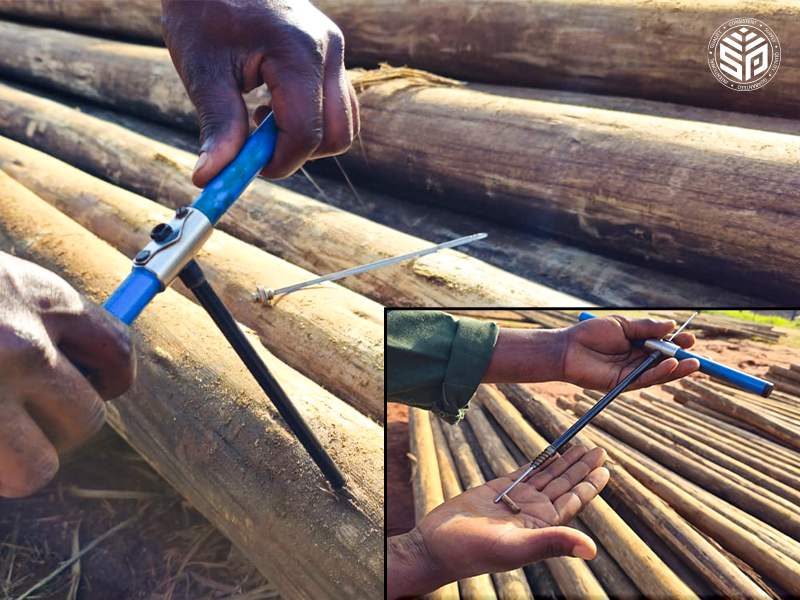
Step 4: Treated lumber is inspected
After treatment, lumber is moved to the inspection ramp. Using an increment borer, samples are taken to test the depth of preservative penetration, a minimum of 13mm for poles. If penetration is insufficient, the lumber undergoes the entire process again until it meets specification standards.
Once approved, treated lumber products are marked and sorted:
- Each pole receives anti-split plates covering at least 80% of its end area.
- Plates are stamped with:
- Year of treatment
- Hazard Class
- Sabie Poles trademark (STP)
- SABS approval mark
- Colour coding is applied to indicate different dimensions.
Because water-borne preservatives reintroduce moisture during treatment, treated lumber must be allowed to dry before use. This typically takes about seven days, depending on conditions.
Common Types Of Lumber Preservatives.
Here, we will only discuss two highly preferred preservative types, namely CCA (Copper, chromate, Arsenic) and Tanalith E.
The Differences Between CCA And Tanalith E Preservatives:
While both preservatives are highly effective, there are some differences worth noting:
- CCA (Copper, Chromate, Arsenic):
- One of the most widely used lumber preservatives in the world.
- Provides excellent protection against insects, fungal decay, and harsh weather conditions.
- Leaves a characteristic greenish tint on the lumber after treatment.
- Highly durable, making it ideal for outdoor structures, fencing, poles, and construction lumber.
- Tanalith E:
- A newer, environmentally improved preservative compared to traditional CCA.
- Contains copper as the primary active ingredient, but uses less arsenic, making it a preferred option where reduced environmental impact is desired.
- Offers excellent protection similar to CCA, with a slightly different color and finish.
- Often chosen for projects where ecological considerations are important, or where lumber may be in closer contact with humans or animals.
At Sabie Poles, we offer both CCA and Tanalith E treated lumber, though CCA remains the more cost-effective option. All treatments meet strict quality requirements set by South African National Standards (SANS)..
GCC Projects Featuring Treated Lumber Products
Across the GCC region, treated lumber has become an increasingly popular material choice in both luxury and eco-conscious developments. Its natural warmth, versatility, and durability make it ideal for projects that must withstand harsh climates. Here are three examples
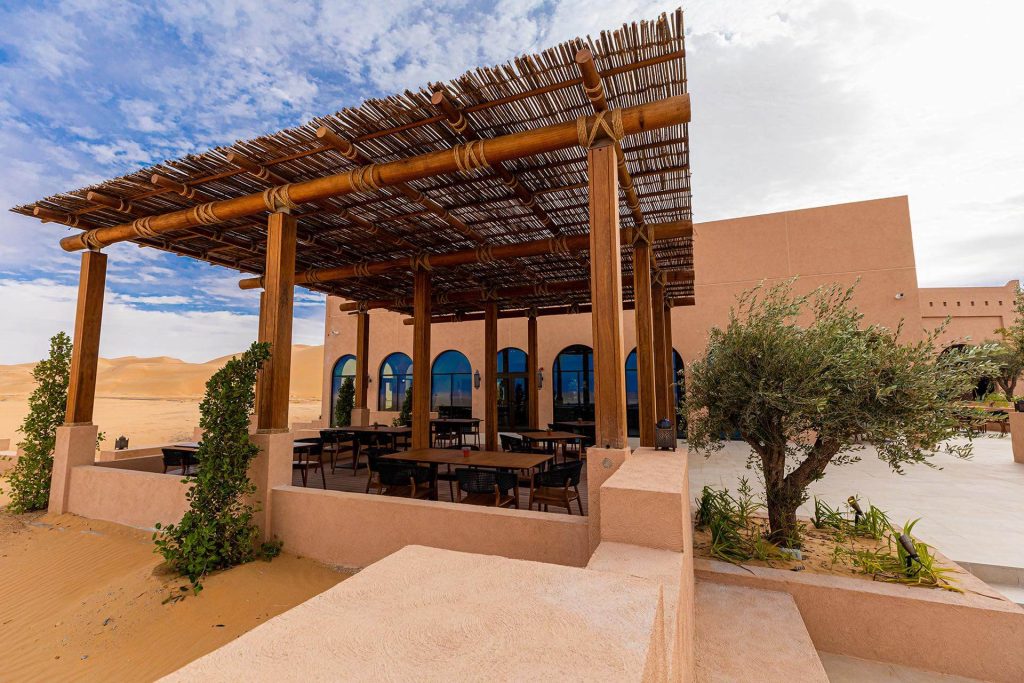
Bateen Liwa Resort in Abu Dhabi.
The natural round lumber poles bring warmth and harmony to the desert setting. Their earthy tones and textures soften the modern architecture, creating a calm, inviting mood. Beyond aesthetics, the use of renewable lumber reflects a sustainable design that blends luxury with nature.
Picture yourself sitting beneath the lumber pergola as sunlight filters through, casting soft shadows. The structure feels alive, warm, natural, and intentional, reminding you that true comfort comes from designs that respect their surroundings.

A Tranquil Outdoor Escape Using Timber
In Dubai, this home features a custom thatched gazebo by Cape Reed, for outdoor dining.
The space has become a favourite family gathering spot, perfect for relaxing and enjoying the tranquil view. Built with sustainably sourced, pressure-treated structural timber, the gazebos combine natural beauty with lasting quality and add real value to the property.
Imagine a sunny afternoon in Dubai, where the family gathers, laughter blending with the gentle splash of the nearby lake. Children play by the pool while adults enjoy a quiet drink, shaded by the timber structure, soaking in the serene view. As evening falls, the firepit glows warmly, turning the space into a cozy haven for stories, meals, and memories.
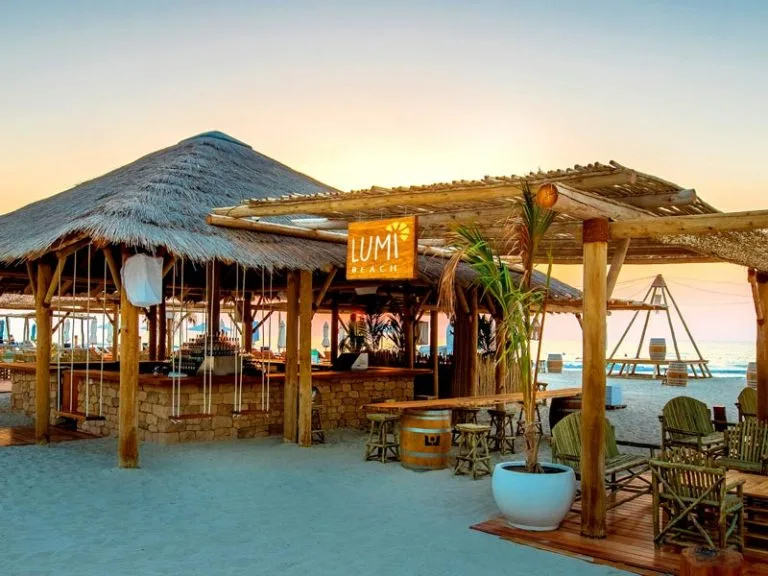
This beautiful beach bar, built by Cape Reed, captures the sunset, with a warm and inviting atmosphere. The predominant use of natural timber in the construction of the bar, the thatched roof, and the furniture creates a rustic yet elegant aesthetic. The wooden beams and posts provide structural support, while also contributing significantly to the overall mood.
Imagine the last hints of orange and pink fading from the sky as you settle into one of the sturdy wooden chairs, the cool sand still clinging to your feet.
Taking a long sip of your cocktail, you lean back, letting the tranquil, woody embrace of the bar and the endless ocean view wash away the day’s worries. This, you think, is exactly where you need to be.
Treated Lumber is the Backbone of South Africa’s Construction Environment
So, here, I hope to trigger some curiosity. South Africa is known to have extreme weather conditions throughout the year. From the Kalahari Desert’s extreme heat to the coastline’s extreme wind and humidity.
However, CCA-treated lumber performs very well under these conditions. especially when it is maintained well. Lumber is used widely in South Africa.
In fact, along the coast, the National Building Regulations mandate that all lumber be treated against termites, wood borers, and fungal decay, following standards set by the NRCS and guidelines like VC 9092 and SANS 10005.
Here are a few examples of how treated lumber is used in different applications in South Africa:
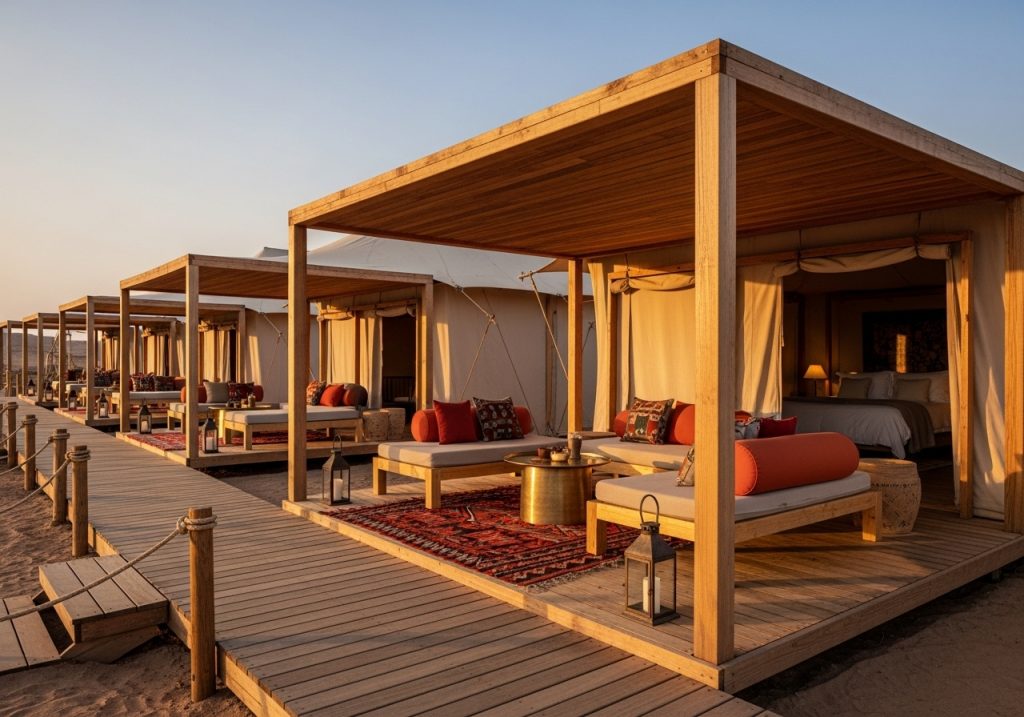
Desert Glamping Elegance
The use of natural, finely finished, solid square beams creates a striking architectural framework, offering a sense of shelter and permanence against the vast, open landscape.
The smooth, inviting wooden decking extends the living space, seamlessly blending the interior comfort with the outdoor serenity.
This intentional design, rich in natural wood tones, perfectly complements the warm, earthy palette and soft fabrics, ensuring a mood that is both luxurious and deeply tranquil.
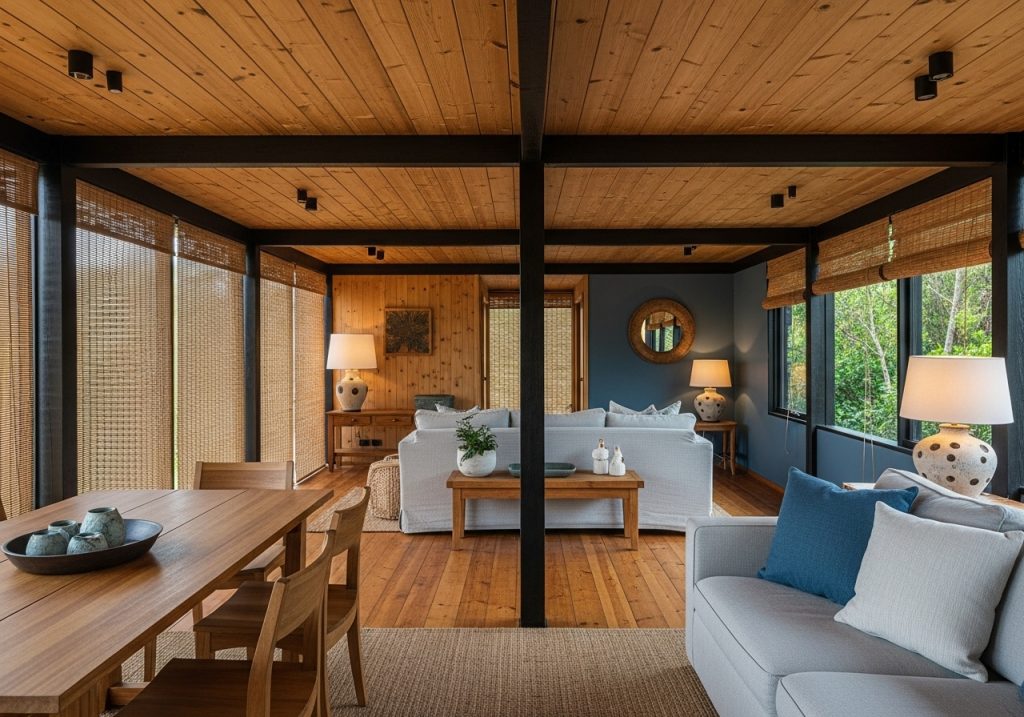
Forest Haven that blends Strength and Serenity
Discover a living space where structural elegance meets natural warmth. The rich, honey-toned lumber ceiling, flooring, and accent walls create an enveloping sense of comfort.
It brings the calming essence of the outdoors in. This organic beauty is thoughtfully complemented by the bold, contrasting black beams and window frames, which provide a modern, defined structure, framing the lush green views.
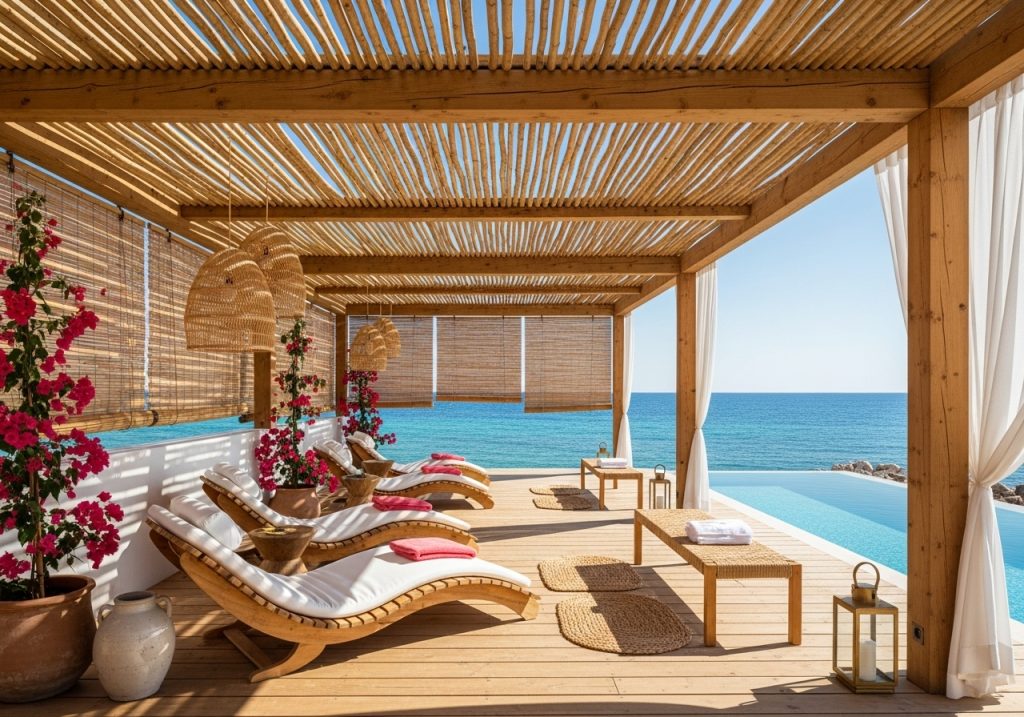
Coastal Serenity with Organic Textures, Endless Views
The light-toned lumber decking forms a welcoming foundation, inviting barefoot comfort as it stretches towards the horizon. Above, the distinctive slatted lumber canopy, crafted from raw, natural wood, casts a beautiful play of light and shadow, filtering the sun’s brilliance while maintaining an open, airy feel.
This organic design, accentuated by the warm wood and natural textures, harmonizes perfectly with the vibrant bougainvillea and the sparkling azure sea, crafting an unparalleled oasis of tranquility and understated elegance.

Elegant Dining with A Fusion of Earth and Sea
Experience spectacular seaside dining where lumber is the ultimate design statement. The rich, dark wooden decking forms a luxurious pathway, firmly anchoring the space and providing a warm, contrasting transition from the cool marble interior to the sandy beach.
Above, the extensive slatted lumber canopy provides essential shade while its clean, linear design creates a sophisticated texture, directing the eye toward the mesmerizing ocean view.
This masterful use of wood on both floor and ceiling instills a feeling of opulence and organic connection, flawlessly complementing the vibrant turquoise accents and fostering an energetic yet deeply relaxing coastal mood.
How to Import Treated Lumber Products From South Africa
Importing treated lumber products from South Africa can seem daunting, but with the right partner and process in place, it becomes a smooth and reliable solution. At Sabie Poles, we’ve exported poles and lumber for decades, and we understand the steps, documentation, and logistics required to deliver quality up to the standards demanded in the GCC countries.
1. Finalising Your Order
Product name, dimensions, required certification and documentation, payment terms, and transportation method should all be confirmed and recorded accurately.
Missing or incomplete paperwork can cause delays, extra costs, or even seizure at customs. Our role is to guide you through each step with clarity.
2. Minimum Order Quantities and Freight Options
For shorter‑haul transport (for example, regional shipping within Africa), we use road freight: our minimum load is 32 tons.
For longer distances, such as shipping, ocean freight is used, with a minimum order of 23 tons (container‑based) to ensure cost efficiency and safe delivery of heavy treated timber products.
3. Lead Times for Delivery
Lead times depend on stock availability, destination, and transport method. Road freight typically takes up to 7 working days, while ocean freight, including booking and documentation, can take around 10 working days. Proper planning is essential.
4. Handling Issues and Disputes
Even with experienced exporters, unforeseen issues can arise, customs clearance delays, documentation mismatches, container damage, or delivery timing conflicts. At Sabie Poles, we provide full support and communication: we identify root causes, propose solutions, keep you informed, and ensure minimal disruption to your project. Our experience in exporting treated lumber products means we are equipped to help you mitigate risk.
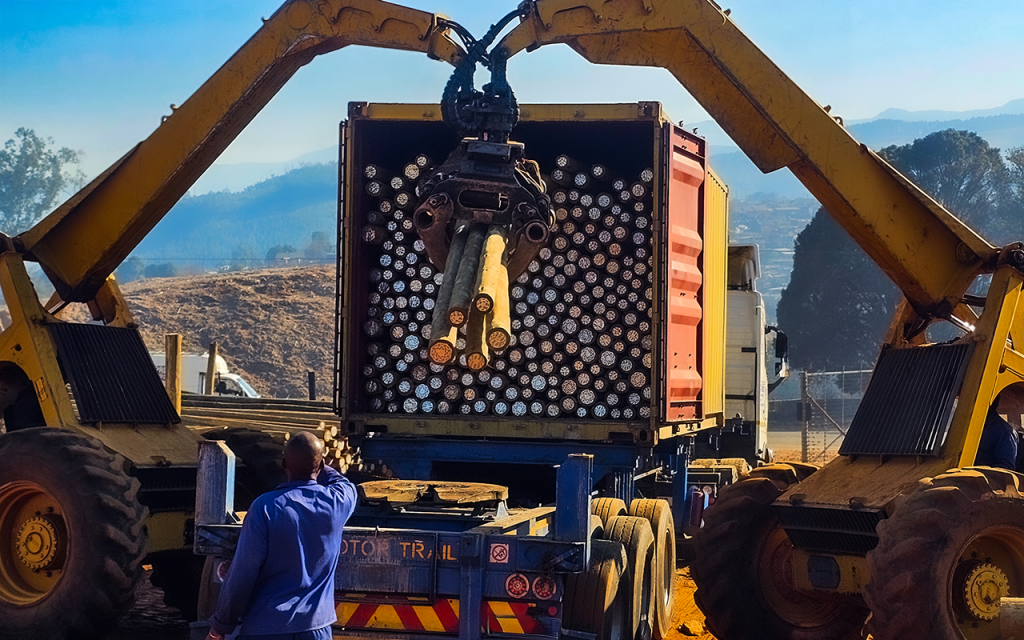
We Make Importing Timber Easy
Importing treated lumber products doesn’t have to be complex when you have a reliable supplier committed to clarity, logistical precision, and communication. When you’re ready, contact us and we’ll walk you through exactly what’s required, tailored to your destination and project in the GCC.
Need more info or even a quote on our treated lumber products? Get in touch with Danie. We’re here to help you make the best timber choices for your project. Call/Whatsapp: 072 838 2838 or email: sales@sabietimber.co.za. We are always here to assist.


